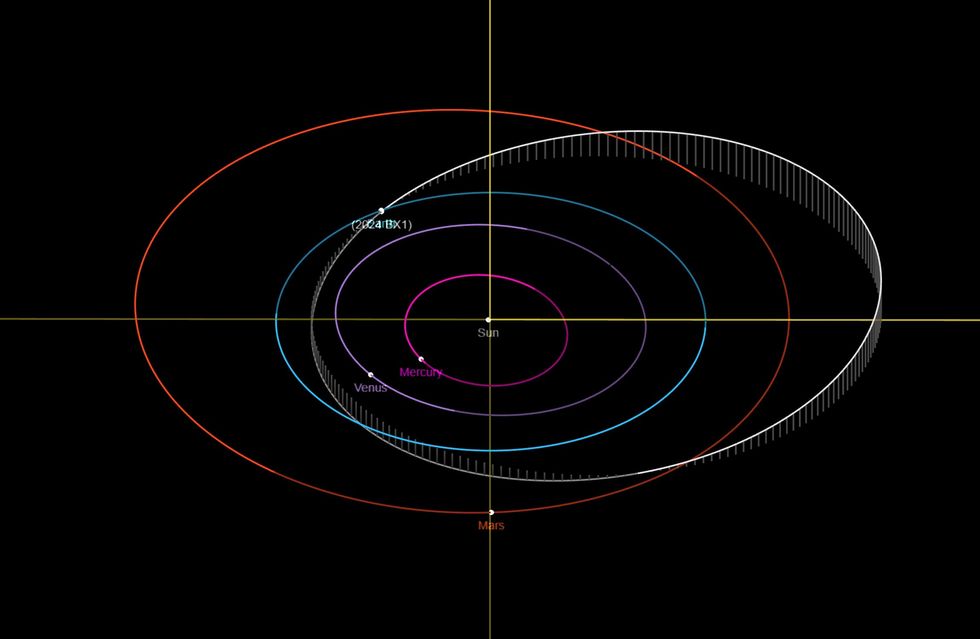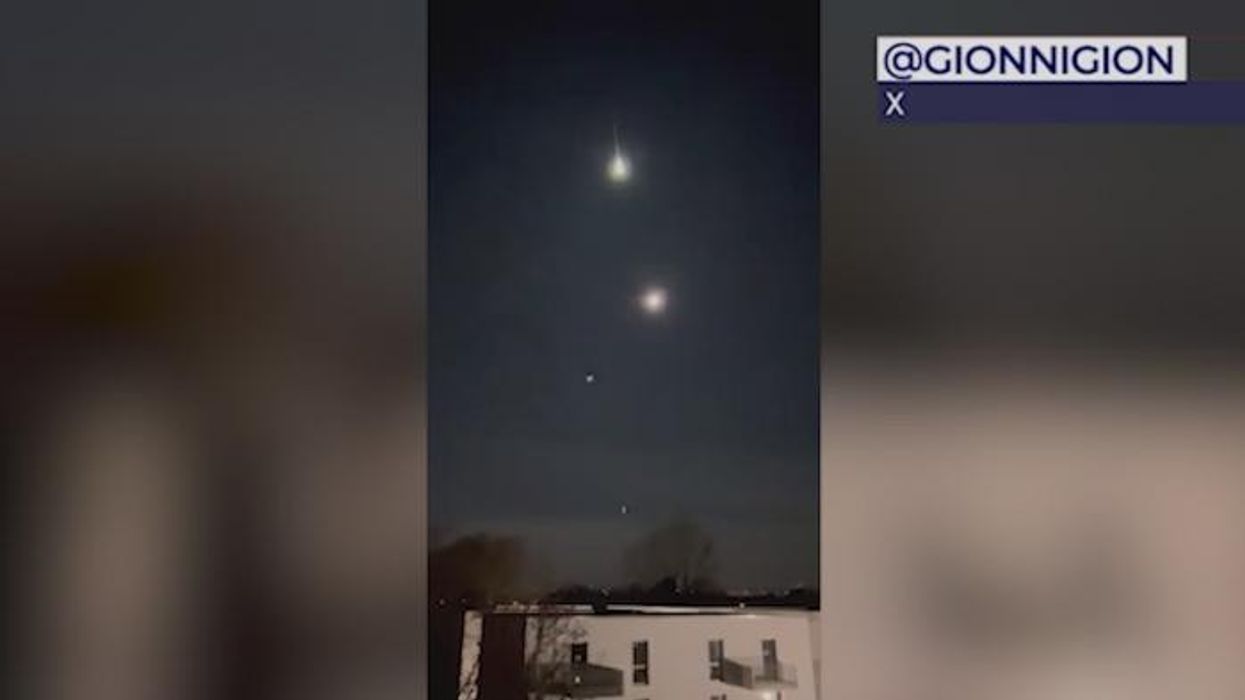Asteroid suddenly lights up night sky as it crashes towards Earth at incredible speed

Luckily for us down below, the shooting star was only a metre across
Don't Miss
Most Read
An asteroid lit up the skies over Berlin this weekend as it burned up on entry to the Earth’s atmosphere.
The space rock, named 2024 BX1, hurtled through the air at a blistering 75,000 miles per hour.
The asteroid proceeded to crash-land just outside Berlin, near the village of Nennhausen.
In a rare occasion for stargazers, Hungarian astronomer Krisztián Sárneczky spotted the rock a few hours before it arrived in our atmosphere, the International Astronomical Union said.

Images from Nasa’s Solar System Dynamics programme have shown the tiny comet’s orbit and eventual impact with our planet
|Solar System Dynamics (Nasa)
Sárneczky is a self-proclaimed ‘asteroid hunter’, and said he’d spotted the incoming object at Piszkéstető Mountain Station, a part of Konkoly Observatory in Hungary.
Some may say the astronomer was pretty fortunate – the asteroid is only the eighth to be discovered prior to actually hitting Earth.
But Sárneczky has form for this – of the eight to be seen, he’s spotted three of them.
Nasa confirmed its imminent arrival on social media and said: “Heads Up: A tiny asteroid will disintegrate as a harmless fireball west of Berlin near Nennhausen shortly at 1:32am CET. Overseers will see it if it’s clear!”
LATEST DEVELOPMENTS:
A live camera feed from Augustusplatz in Leipzig showed the moment the asteroid blazed downwards, with the rock and its trail lighting up the night sky.
Asteroids light up like this due to the incredible speeds at which they travel through space – with no air resistance up there, they can reach speeds like the one spotted over Germany.
When something moving that quickly encounters the air in our atmosphere, the friction is so great it burns white-hot before disintegrating.
Luckily for us down below, the shooting star was only a metre across – unlike the 40m-wide 2015 AK1, which could have flattened a city.
Images from Nasa’s Solar System Dynamics programme have shown the tiny comet’s orbit and eventual impact with our planet.
But Nasa can’t see everything – there’s at least one ‘lost’ asteroid at risk of hitting Earth this year.
Luckily, the space agency has got a plan for Earth’s defence – in 2022, Nasa successfully pulled off a mission to actually move an asteroid in space.
It would appear a rock like 2024 BX1 isn’t of high priority, however – like most shooting stars, it’s a case of ‘blink and you’ll miss it’.











